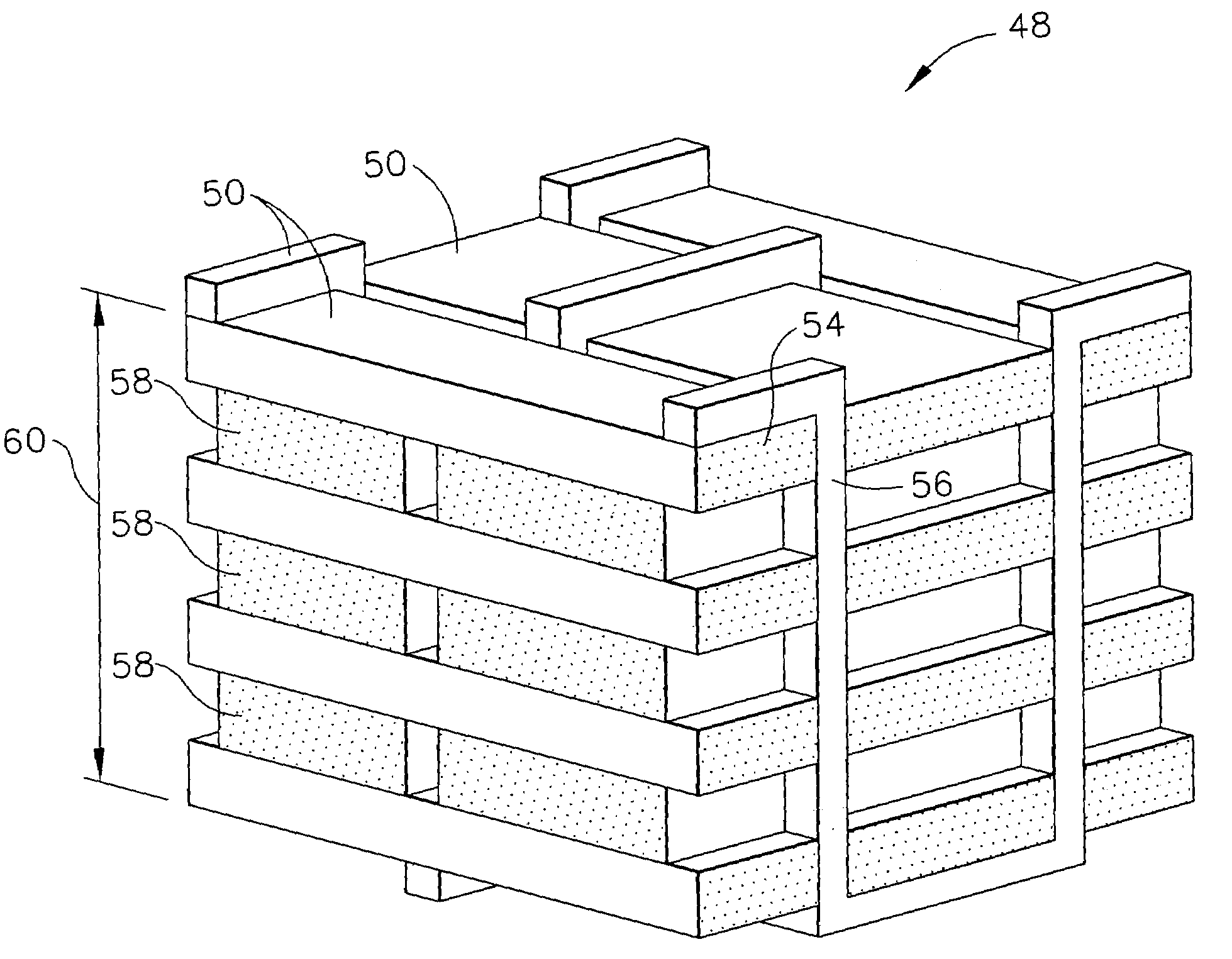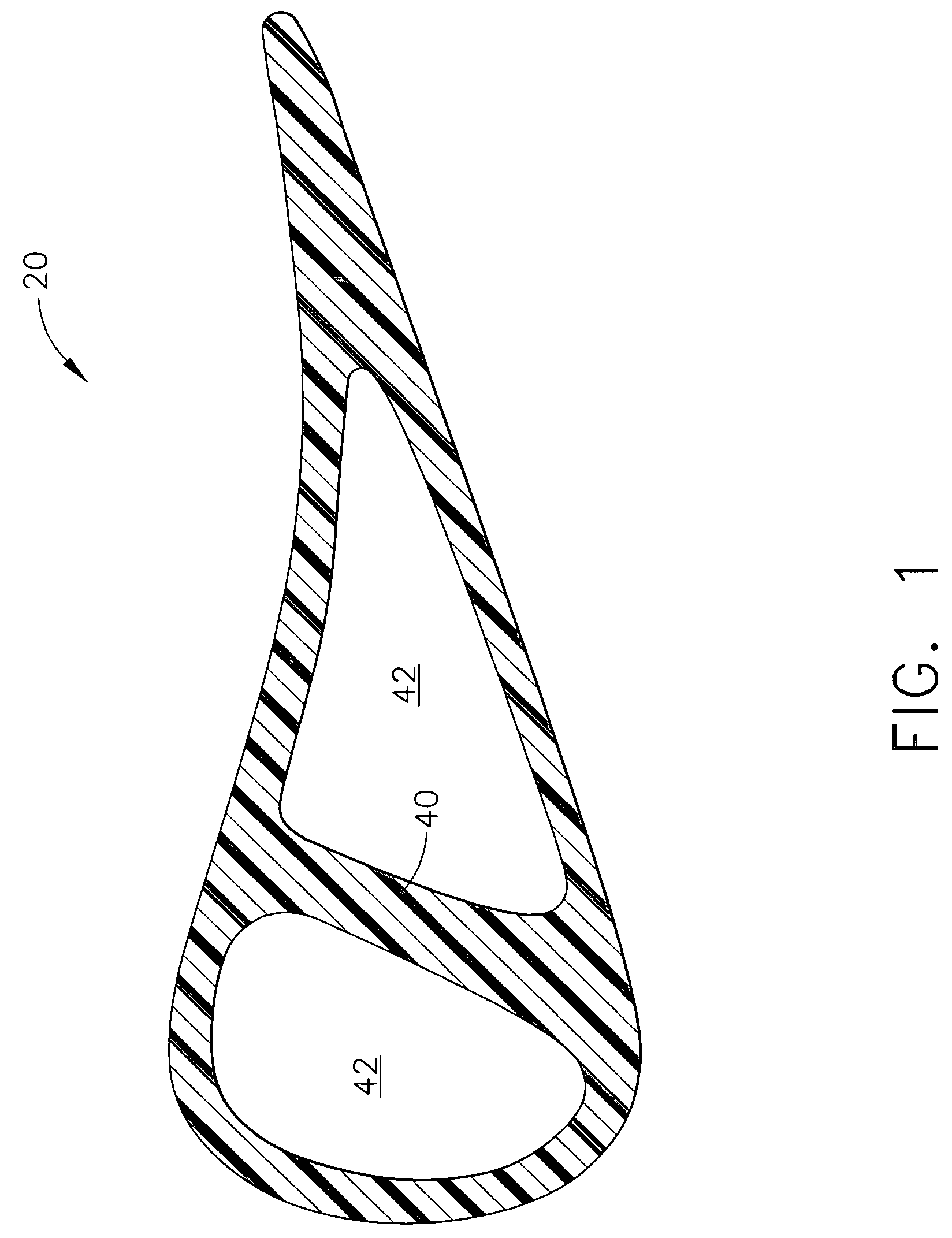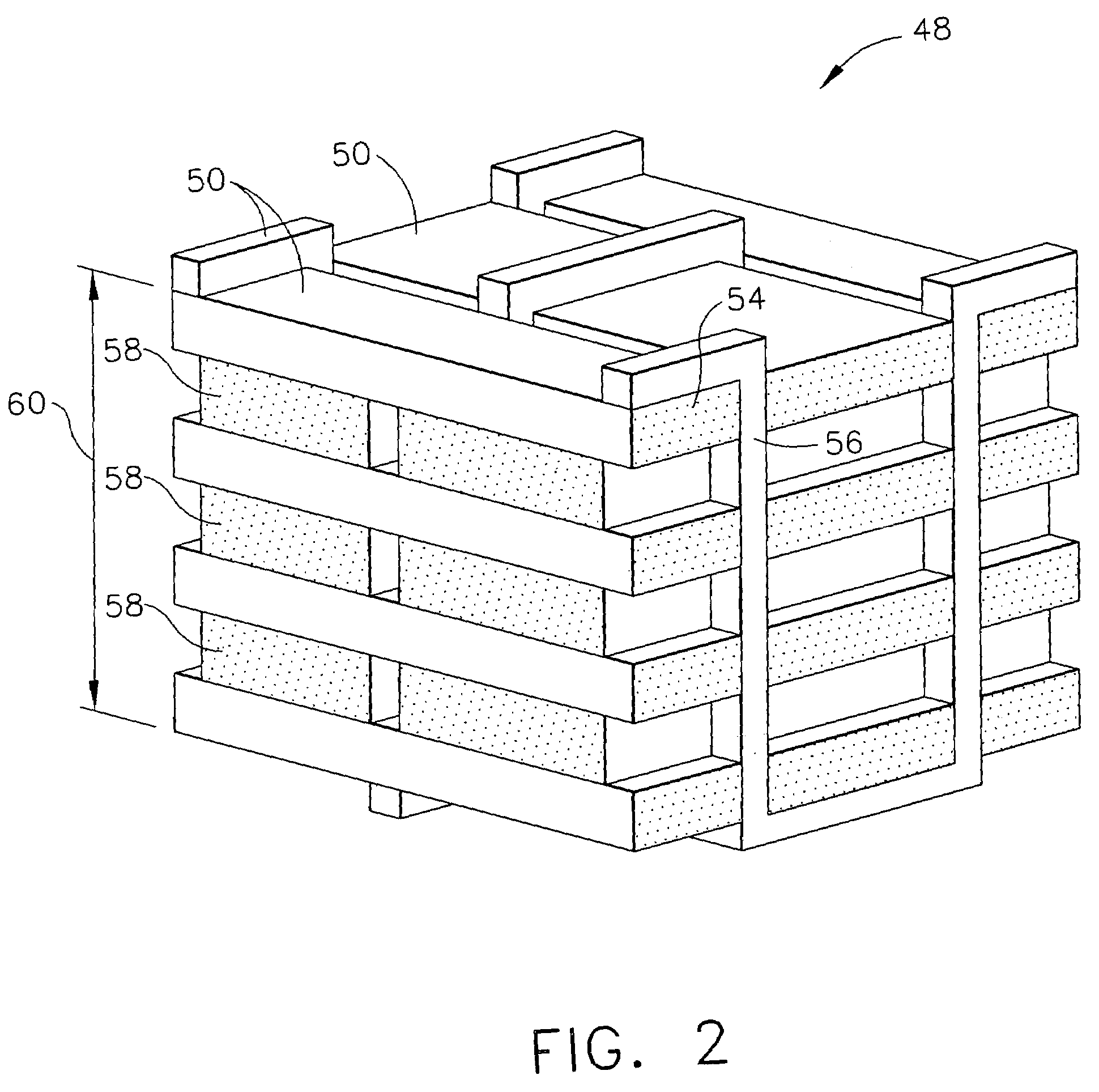Orthogonal weaving for complex shape preforms
a technology of complex shapes and weaving, applied in the field of composite preforms, to achieve the effect of increasing the performance of aircraft gas turbine engines, reducing costs, and increasing performan
- Summary
- Abstract
- Description
- Claims
- Application Information
AI Technical Summary
Benefits of technology
Problems solved by technology
Method used
Image
Examples
Embodiment Construction
[0023]FIG. 1 illustrates a sectional view of vane 20. Vane 20 is a relatively complex three dimensional shape that includes a structural stiffener 40 and cooling air channels 42. During engine operation, cool, compressed air is bled from a compressor section of a gas turbine engine (not shown) and directed through channels 42 to cool vane 20.
[0024]FIG. 2 is a perspective representation of the stitch-weave 48 of the present invention illustrating a plurality of fiber tows 50 arranged in a preferred architecture. As will be appreciated, FIG. 2 depicts the pattern created by the present invention. Fiber tows 50 are made up of one or a plurality of long, relatively thin smaller fibers. As shown in FIG. 2, fiber tows 50 include three types including: weft tows 54, a stitcher tows 56 and warp tows 58. The smaller fibers making up the fiber tows 50 are any fiber suitable for the construction of preforms for ceramic matrix composites. The fibers may include, but are not limited to silicon c...
PUM
| Property | Measurement | Unit |
|---|---|---|
| diameters | aaaaa | aaaaa |
| angles | aaaaa | aaaaa |
| length | aaaaa | aaaaa |
Abstract
Description
Claims
Application Information
 Login to View More
Login to View More - R&D
- Intellectual Property
- Life Sciences
- Materials
- Tech Scout
- Unparalleled Data Quality
- Higher Quality Content
- 60% Fewer Hallucinations
Browse by: Latest US Patents, China's latest patents, Technical Efficacy Thesaurus, Application Domain, Technology Topic, Popular Technical Reports.
© 2025 PatSnap. All rights reserved.Legal|Privacy policy|Modern Slavery Act Transparency Statement|Sitemap|About US| Contact US: help@patsnap.com



